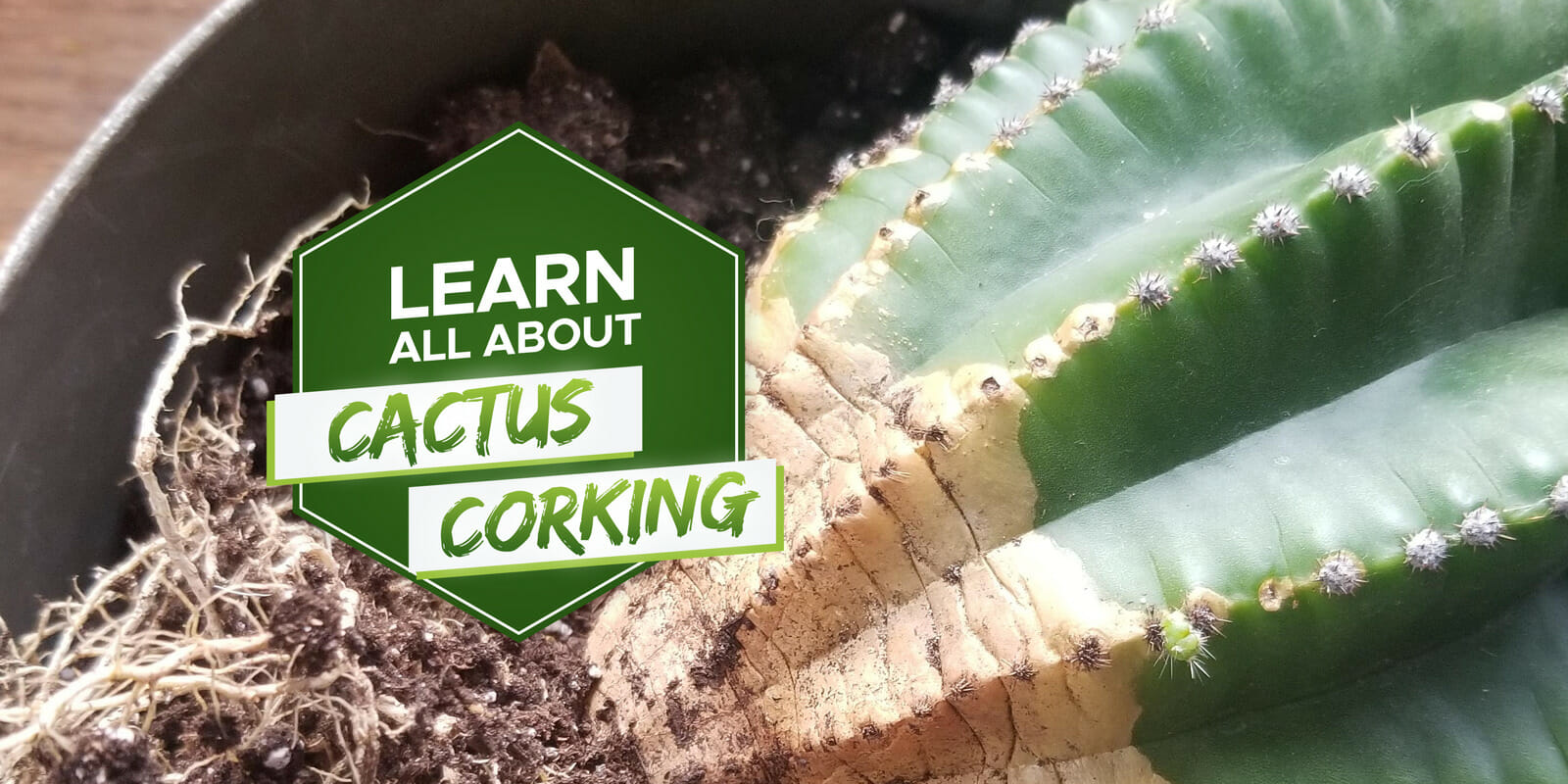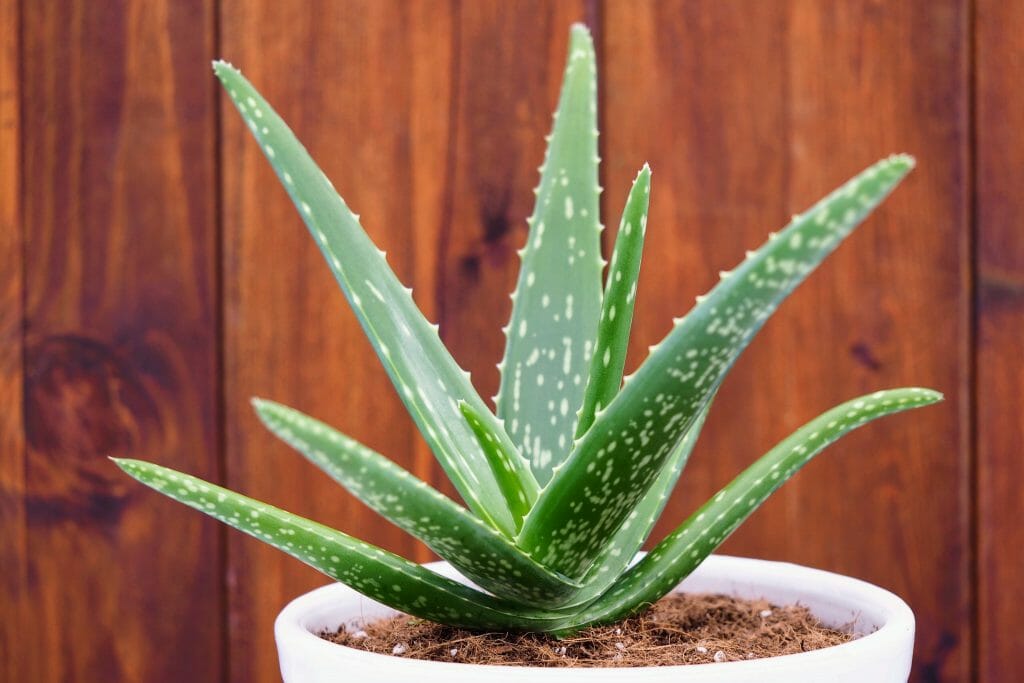Cacti are notoriously hardy and easy to take care of; however, if you have had a particular cactus for a long time, there is one issue that you might have to deal with, and that is cactus corking.
Corking is a naturally occurring process where areas at the base of the cactus become brown and dried out in appearance. This happens naturally in more mature cacti.
It’s very easy to get emotionally attached to cacti because their lifespan is so long, so it can be distressing when they start to brown. But don’t worry; we are here to reassure you and help you learn to love your cactus’s brown spots.
This article is going to get to the bottom of this corking issue and help you diagnose your cactus accurately.
What is Cactus Corking?
Corking is a natural part of an aging cactus that causes the exterior skin to become dry and brown.
When a cactus gets mature, it may develop corking at the base that spreads upwards. The stems will appear dry and brown on the outside, while the texture inside will still be firm. The rest of the plant will grow strong and green above this corking.
This texture change is caused by a build-up of suberin in the tissues that cause calluses that thicken the outer layer of the plant. Luckily, this only affects the epidermis, so your cactus will remain green and moist inside. The external callus may lead the corked areas to feel a little firmer and less spongey than the green parts.
Corking is often found in cacti that grow vertically rather than getting wider. This is because corking can sometimes be triggered by a need for support, especially if a cactus is growing very tall. The base will callus, and the skin will grow thick to form a supportive base for the cactus to flourish from.
Although corking may look like the cactus is drying out and dying, you can put your mind at ease knowing that this is not the case.
The main signs of cactus corking are:
- Dried appearance
The outer layer of the cactus will look dried out and brittle to the touch. The dryness will not cause shrinking or shriveling in any other area than the outer epidermis.
- Color change
The previously green epidermis will turn a pale brown shade along with the texture change. The color will only happen on the surface and not permeate the rest of the cactus.
- Texture
When the skin browns, it will also thicken and become more leathery like a callus. This will make it feel firmer to the touch than usual.
- Losing spines
As the area browns, the jagged edges will smooth out, and the spines will drop out of the affected area.
The main thing we want you to come away with here is that corking is not dangerous and will not kill your cactus.
Cactus Corking vs. Sunburn vs. Rot
It can be very easy to mix up your plant ailments, especially when they have similar symptoms. Don’t stress, though; there are some features to look out for that makes diagnosing a little easier.
Three issues that are often confused are corking, sunburn and rot. This is because they all cause your cactus to brown. The causes, however, are very different.
We have already gone into the details about corking but let’s see how they compare:
| Corking | Sunburn | Root Rot | |
| Cause | Age | Exposure to harsh sunlight for prolonged periods | Overwatering |
| Coloring | Browning starting at the base and moving upwards | Patchy brown spots in certain spots | Browing at the base moving upward |
| Damage | Thickened and browned epidermis | Browning and brittle texture | Browning on the outside and rotting inside |
| Stems | Intact and firm | Intact and firm | Soft and mushy |
Although, as we have discussed, there is nothing you can do about corking, but it will not harm your cactus in the long run. With sunburn and root rot, it is possible to save your cactus and return it to its green state.
To remedy sunburn on your cactus:
- Move your cactus to an area that gets 5-6 hours of indirect sunlight a day, so it is not overexposed.
- If you can’t move your cactus, rotate it regularly, so the whole cactus gets even sun.
- If necessary, cover your cactus with shade cloth at the sunniest point in the day to protect it.
If your cactus has root rot, it can be trickier to handle, but there are some things you can do.
- Stop watering immediately.
- Gently remove the cactus from the pot and remove any browned or rotting stems along with some healthy flesh to prevent the rot from spreading.
- Repot your cactus in a new pot with fresh, well-drained soil
- Only water when the soil has sufficiently dried out.
Frequently Asked Questions:
Why is my cactus scabbing?
Scabbing can sometimes look similar to corking due to the color and texture, but there are some distinctions that set them apart.
While corking starts from the base and moves upwards, scabbing will happen in small areas across the cactus. Scabbing can happen as a result of overwatering, poor ventilation, or low temperatures.
The main way to avoid scabbing in your cacti is to water them infrequently and place them in a warm spot that doesn’t get frequent draughts.
How long do cacti live?
If cacti are looked after correctly, they can last years and years with very minimal care.
In general, cacti can live for over ten years inside or in pots. This can be extended if you care for them very carefully and repot them at the appropriate times.
How often should my cactus be watered?
Cacti are really easy to look after because they are highly adaptable and require very little watering. Overwatering can cause many issues, including root rot, which we discussed earlier.
We generally water our cacti once a week, but only if the soil looks sufficiently dry. You can cut back on watering in the winter and up your watering schedule when the weather gets warmer.
Conclusion
As we have explored, cactus corking is a natural part of the cactus’ life.
Corking will change the color and texture of the outer layer of the cactus while the flesh inside remains green and firm. Although this is not very visually appealing, it is not an issue you need to be concerned about, and there is no way to reverse this effect. Think of corking as a badge of honor to prove that your cactus has been alive and kicking for years!
We hope this has reassured you that your treasured cactus is not in danger and given you a new appreciation for your aging cactus.





